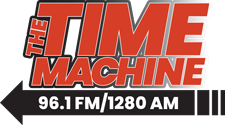Key Takeaways:
Fed expected to hold rates steady despite mounting economic headwindsPCE inflation substantially decelerated in March, falling to 2.3%.Labor market is weakening rapidly with hiring rates at decade lows.
Fed Decision Takes Center Stage
This week’s central focus is the Federal Reserve’s policy meeting on May 6-7, where officials are widely expected to maintain the current interest rate target of 4.25%-4.5%. However, the economic landscape has shifted dramatically since their last meeting in March, raising questions about how much longer the Fed can afford to wait before easing policy.
The recent data presents the Fed with a challenging dilemma: inflation is clearly moderating toward their 2% target, but economic growth is simultaneously decelerating at a rapid pace.
While some Federal Open Market Committee members worry about the potential for tariffs to push prices higher, economic research reveals that tariff shocks can lead to recessions in the short-run. This is because consumers both at home and abroad postpone purchases, lowering aggregate demand to exert downward pressure on prices.
Inflation Pressures Rapidly Subsiding
The Personal Consumption Expenditures (PCE) price index – the Fed’s preferred inflation gauge – showed remarkable improvement in March. The index registered a -0.04% monthly change, down sharply from February’s 0.4% increase. On an annual basis, PCE inflation decelerated to 2.3% from 2.7%.
More importantly, core PCE (excluding volatile food and energy prices) remained flat month-over-month and slowed to an annual rate of 2.6% from 3.0% in February. This marked the lowest level for core PCE since last June, indicating that underlying inflation pressures are steadily abating.
Labor Market Teetering on the Edge
The employment picture is becoming increasingly concerning. While the headline unemployment rate remained steady at 4.2% in April’s jobs report, released on May 2, several warning signs are flashing beneath the surface:
Initial unemployment claims are once again trending upwardThe share of long-term unemployed increased to 23.5% in April, returning to pandemic-era highsHiring rates have fallen to their lowest level in a decadeWage growth is moderating significantly, with April’s average hourly earnings rising just 0.17% versus an expected 0.3%
These metrics collectively point to a labor market that is losing momentum rapidly – a key consideration for Fed officials as they weigh their dual mandate of price stability and maximum employment.
Economic Growth Under Pressure
Adding to concerns, the economy contracted by 0.3% (annualized) in the first quarter of 2025, according to the Bureau of Economic Analysis. This negative GDP print represents a sharp reversal from the 2.4% growth recorded in Q4 2024.
The GDP decline primarily reflected increased imports and decreased government spending, partially offset by modest gains in investment, consumer spending, and exports. With consumers pulling demand forward in anticipation of tariffs, consumer spending in the second half of this year is expected to be weaker.
Mounting Headwinds
Several additional factors threaten to further constrain economic growth in the months ahead:
Tariff increases: Recently implemented tariffs effectively function as tax hikes on businesses (and consumers), potentially dampening aggregate demandGovernment spending reductions: Projected cuts to federal expenditures could further restrict economic activity – if they’re not accompanied by offsetting tax cuts.
The combination of these factors suggests growth could decelerate significantly over the next 12 months, potentially forcing the Fed’s hand sooner than previously anticipated.
Market Expectations
Financial markets are currently pricing in the first of three anticipated rate cuts in July. The implied probability of a rate reduction in July currently stands at approximately 65%, according to CME Group’s FedWatch tool.
Given the latest economic data, market participants increasingly view the Fed’s current policy stance as overly restrictive relative to the deteriorating economic fundamentals.
Key Data Releases to Watch This Week
Several critical economic indicators will be released this week, potentially providing further clarity on the economic outlook:
ISM Services Index (Monday): Expected to show moderate expansion in the dominant services sectorFed Policy Statement & Press Conference (Wednesday): Jerome Powell’s commentary on inflation, labor market conditions, and forward guidanceWeekly Jobless Claims (Thursday): Continued upward trend would signal further labor market weakness
As economic uncertainty rises, this week’s Fed meeting will be scrutinized for signs of a potential shift in policy trajectory. While a rate cut in May remains highly unlikely, market participants will be looking for acknowledgment of the rapidly changing economic landscape and potential signals about the timing of future easing. Other Fed officials will break their silence on Friday with speeches by New York Fed President John Williams and Fed governor Christopher Waller.







